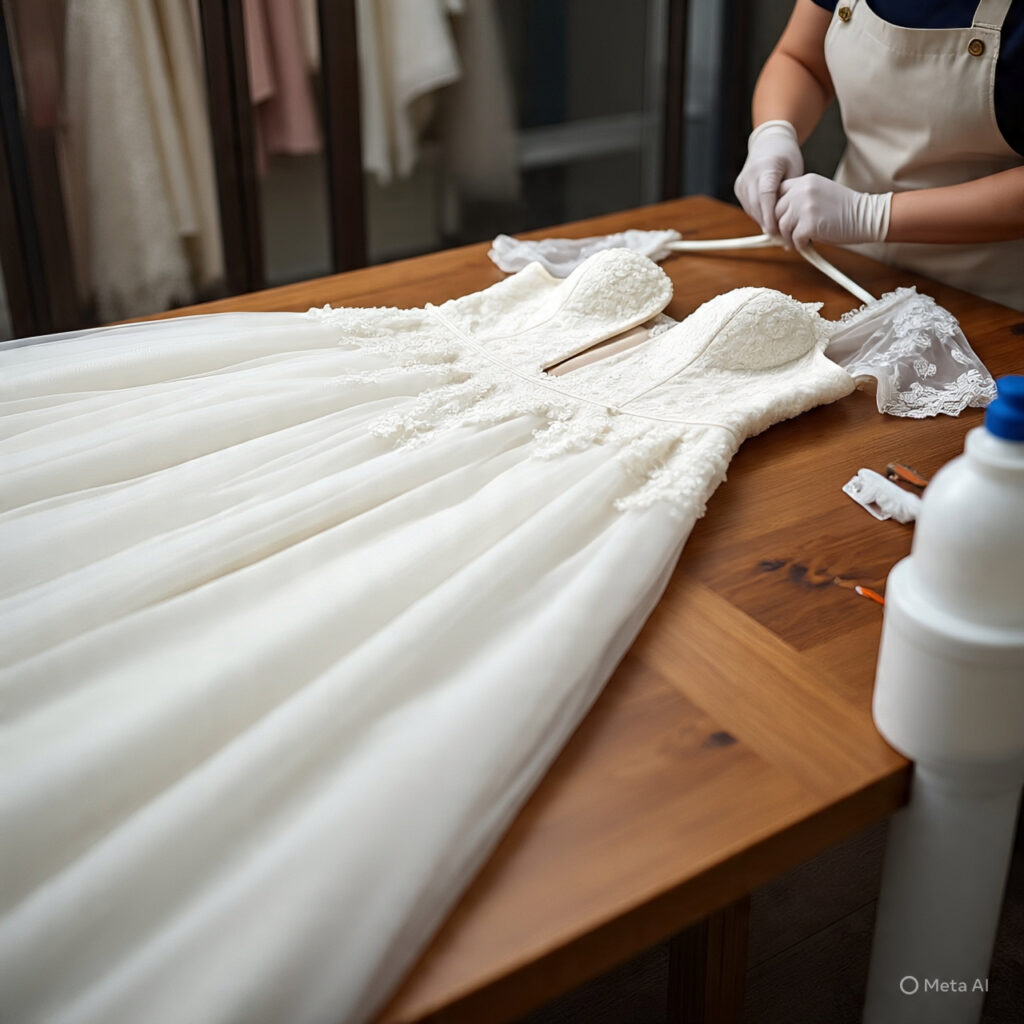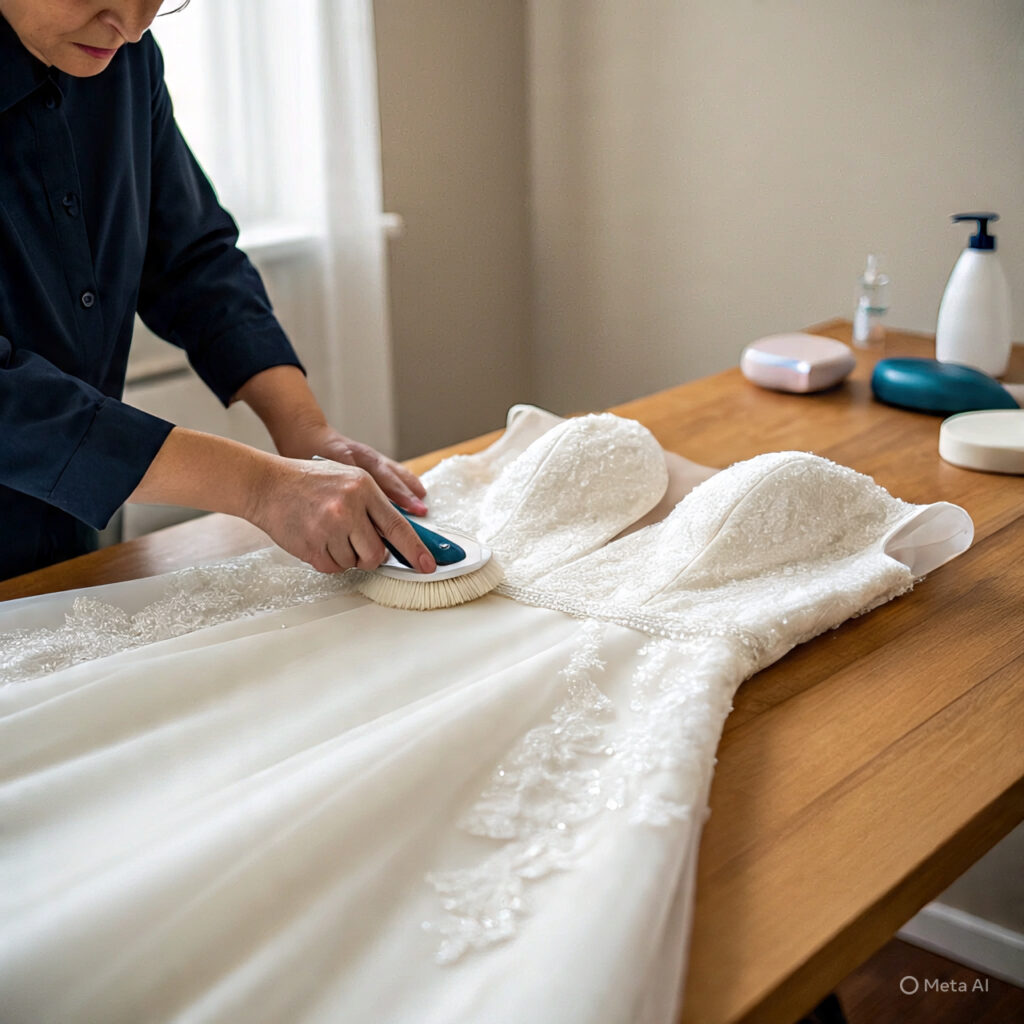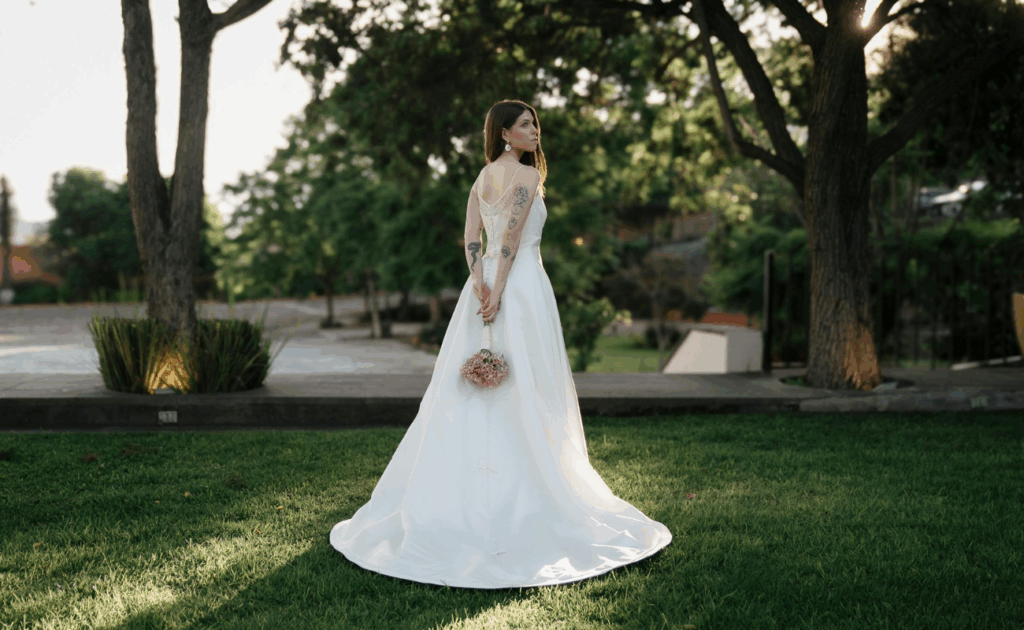You unzip the garment bag or open the keepsake box, expecting to see your gorgeous white wedding dress exactly as you left it. But instead… It’s yellowed. Maybe just a faint tint, maybe full-on ivory-gone-wrong. Either way, your stomach drops.
What happened? Can it be fixed? Is it ruined forever?

Before you go into full panic mode—take a breath. Yellowing is common, and in many cases, your dress can absolutely be cleaned and restored. This is where yellowed wedding dress cleaning steps in. It’s a specialized process, and when done right, it can revive even decades-old gowns. Here’s everything you need to know about what causes that yellow hue and what to do next.
Why a Wedding Dress Turns Yellow Over Time
Even if you only wore your dress once, the fabric continues to react to its environment long after the big day. Yellowing is often the result of:
Oxidation – Exposure to air, even inside a box or garment bag, causes fabric fibers to slowly change color.
Body oils or invisible stains – Think sweat, perfume, champagne, or makeup—these can darken over time if not properly cleaned.
Improper storage – Plastic bags, non-acid-free tissue paper, or humid conditions can speed up discoloration.
Synthetic fabrics – Many gowns contain polyester blends that yellow more quickly than pure silk or cotton.
The key thing to understand? Yellowing isn’t always a sign of damage—it’s usually just a sign of time.
Step One: Don’t Try to Fix It Immediately

When you first see the yellowing, your instinct might be to spot-clean it or toss it in the washer. Resist that urge. Wedding gowns are delicate—often a mix of fine lace, layered tulle, beading, boning, or satin—all of which can react badly to aggressive cleaning methods.
Bleach? Too harsh. Regular detergent? Not pH-neutral. Home steamers? Risky. You can do more harm than good if you’re not careful.
Step Two: Assess the Damage
Carefully examine the gown in natural light. Is the yellowing uniform? Just in certain areas? Focused on the bodice, hem, or underarms? These clues will help a professional cleaner determine the likely cause and the best treatment.
Take note of:
– Fragile or brittle fabric sections
– Discoloration around embellishments (pearls, sequins, appliqués)
The more you know, the easier it is to decide whether dry cleaning, full restoration, or preservation is the best next step.
Step Three: Contact a Professional Cleaner (Not Just Any Dry Cleaner)
This is where many brides go wrong: they head to their neighborhood dry cleaner. But wedding dresses are not everyday garments. You need someone who specializes in wedding gown cleaning and restoration, especially if yellowing is involved.
Look for services that offer:
– Hand-cleaning with gentle, fabric-safe solvents
– Oxidation treatment for yellowed or aged fabric
– Experience with vintage or delicate bridal wear
– Before-and-after photos, testimonials, or guarantees
The right professional will assess the fabric type, age of the stains, and whether deep cleaning or light treatment is needed. In many cases, they can restore the gown to a much brighter (sometimes near-original) shade.
Step Four: Consider Preservation After Cleaning
Once your gown is cleaned and looking fresh again, don’t just hang it back up. Preservation is key to keeping yellowing from happening again.
Invest in a professional preservation box or kit that includes:
– Acid-free tissue and materials
– A breathable storage chest
– Protection from moisture, dust, and UV light
You can also ask your gown cleaner to bundle cleaning and preservation services together for long-term results.
Final Word: It’s Not Too Late
Yellowing may be disappointing, but it’s not the end of your dress’s story. Whether you’re planning to re-wear it, display it, or pass it down to someone you love, professional cleaning can give your gown a second life.
So yes—deep breath—you discovered some yellowing. But with the right care, that glow can be restored. And your dress? It can keep making memories, just like it did the first time.-
Recommended1 recommendationPublished in Bridal





